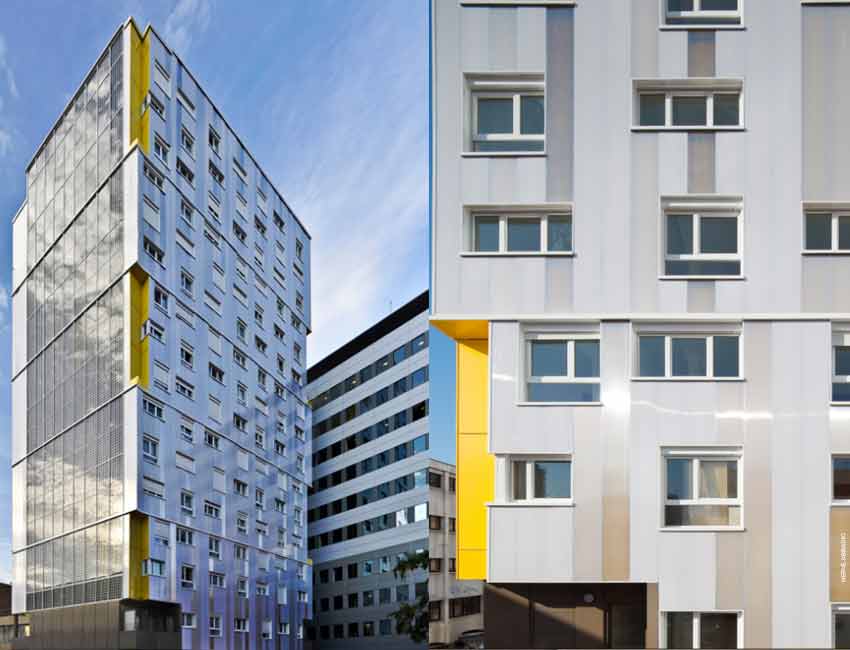
During the design process, you have to factor in variables like the visually appealing aspect of a design, the efficiency of the design and of course the cost factors associated with how the building is structured, what materials are being used.
There is one thing that should not be overlooked, but often is. That is adding a form of protection onto the structure to ensure that the design and integrity of the building does not deteriorate over time.
Due to different weather elements like wind, rain and snow, buildings can quickly become shabby and develop structural faults, such as poor insulation, mould, corrosion and high levels of permeability. This will lead to a lot of heartache down the road if you do not take appropriate measures to prevent this from happening.
Why use rainscreen cladding?
The idea of rainscreen cladding is to protect a building from excessive moisture. When it comes to exterior damage on a building, rain is the number one culprit. This is why you need to have a form of protection in place in the form of rainscreen cladding.
As well as providing protection from moisture and the long list of subsequent problems associated with it, you can also add to the aesthetic value of the façade of a building.
The way it works is due to its structure, it is made up of a ventilated cavity, an outer panel and an inner sheet. The gap that exists between the building’s exterior and the cladding keeps water from being able to seep into the wall. The ventilated cavity encourages good air flow, with the overhangs and screens stopping rainwater form even entering in the first place.
Benefits of Danpal’s rainscreen cladding
 Danpal is one of the leading figures when it comes to rainscreen cladding. The Ventilated Rainscreen System is light but extremely solid. This is thanks to the material it is made out of – connector-bound Microcell polycarbonate panels which are as much as three times lighter than the mainstream rainscreen cladding that is found on the market today.
Danpal is one of the leading figures when it comes to rainscreen cladding. The Ventilated Rainscreen System is light but extremely solid. This is thanks to the material it is made out of – connector-bound Microcell polycarbonate panels which are as much as three times lighter than the mainstream rainscreen cladding that is found on the market today.
This means that it is also simple and quick to install as the connections are completed on the support directly, which means that there is no need for extra framed structures.
Thanks to the ventilation system, there is great insulation efficiency, saving you when it comes to your energy costs, as well as having perfect water tightness due to the double notching of the panels.
The decision to install rainscreen cladding really is a no-brainer.
It adds much needed protection to the exterior of a building from the terribleness of moisture. It can help to enhance the appearance of a building, giving it an updated and more modern look.
It is very easily installed which means that there will be very little disruption. By improving the insulation of the structure, it is sustainable and you can even reuse the cladding if the building is being demolished. Finally, there are many customisable options to choose from when it comes to design and colour.
